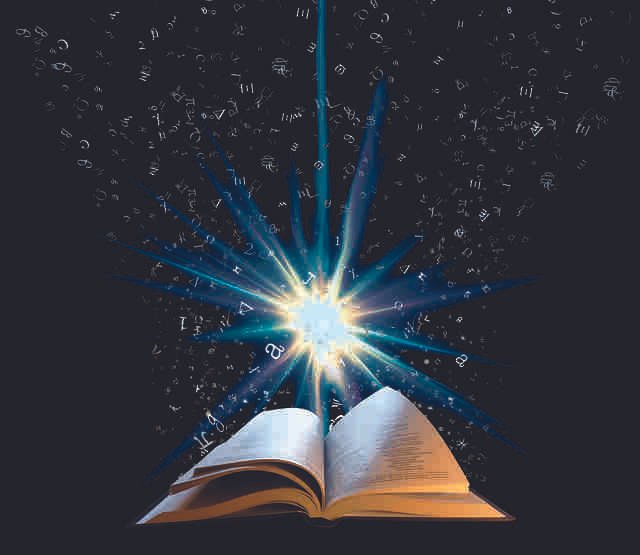Roza Bal and the Controversial Claim of Jesus in Srinagar (Kashmir, India)
This is not an April Fool’s joke: Jesus of Nazareth rests not in Jerusalem (Israel), but in Srinagar, in Kashmir (India). At least that is what many pilgrims who flock to Rozabal believe, this tomb which contains the remains of Yuz Asaf – the “guide of cured lepers” – and who would be none other than Jesus Christ.
The legend of Jesus in Srinagar is intriguing and has captivated the imagination of many. However, historians, theologians, and scholars continue to study and debate the authenticity of these claims. As of now, there is no definitive historical evidence to confirm that Jesus traveled to Kashmir, and the subject remains a matter of faith and cultural belief rather than established historical fact.
Considered completely eccentric by most Bible scholars, this theory would have been born from the combination of beliefs from New Age Christians, religious movements derived from Islam and followers of the Vinci Code, notes the BBC.
To explain the presence of the body of Jesus in Srinagar, all these marginal believers affirm that after being taken down from the cross, the still living Christ would have taken – God only knows how – the Silk Road during the night, to eventually settling in Kashmir, where he would have spent the rest of his life.
Some argue that this story was fabricated by merchants from Srinagar, who wanted to increase the number of visitors to Rozabal, after years of lean times resulting from the rift between India and Pakistan. With 2% of Christians in India – or 20 million people – and mentions increasingly present in tourist guides, the Rozabal attracts the curious so much that it had to be partially closed due to tourist overcrowding.
So, Jesus didn’t die in the cross?
Contrary to what one might think, it is not yesterday that we talk about the presence of Jesus in Kashmir, but since the 19th century, in an attempt to explain the similarities that exist between Christianity and Buddhism. Some argue that between the ages of 12 and 30, a period when Jesus is more or less mentioned in the Gospels, Christ would have stayed in Kashmir to immerse himself in the teachings of Buddha.
As heretical as these theories may seem to some, they have nevertheless been explored by the scientific journalist Gérald Messadié, in a book published in 1995, and within the framework of a series of two documentaries produced by the BBC, which can be viewed here and here.
This building and place is called Rozabal (grave of the prophet). It is located in Srinagar in Kashmir. In the interior there is a shrine with a tomb below: the grave of Yuz Asaf which is translated as Jesus. Cacahuate, CC BY-SA 3.0, via Wikimedia Commons
What claim was it?
The claim refers to the belief and legend that Jesus Christ, after surviving the crucifixion, traveled to Kashmir, India, during his “lost years” and spent time in the region. Some legends and local traditions in Kashmir suggest that Jesus may have visited the area, and the Roza Bal shrine in Srinagar is revered by some as the burial place of a holy figure associated with Jesus.
Why Jesus visited Srinagar, Kashmir? What did he do? how did he go there after surviving the crucifixion?
According to the legends, some believe that Jesus traveled to India during his “lost years,” a period not extensively documented in the Bible. The “lost years” refer to the time between Jesus’ childhood and the beginning of his public ministry around the age of 30.
As for how Jesus allegedly traveled to Kashmir after surviving the crucifixion, the legends do not provide specific details or explanations. These accounts are part of oral traditions and religious beliefs that have been passed down through generations, and they vary in their narratives.
However, the details of Jesus’ activities in Srinagar, if the legends are to be believed, vary in different accounts. Some legends suggest that Jesus engaged in spiritual discussions and interactions with local scholars and religious figures during his time in Kashmir. These accounts vary in different sources and lack concrete historical evidence.

Interior of Roza Bal shrine in in Srinagar Kashmir (India). Death Star Central, CC BY-SA 4.0, via Wikimedia Commons
Is it true that Jesus in Srinagar (Kashmir, India). What happened?
The claim that Jesus Christ spent time in Srinagar, Kashmir, India, is based on various legends and theories but lacks historical evidence. According to these legends, some believe that Jesus survived the crucifixion and traveled to India, including Kashmir, during the “lost years” of his life, which are not extensively documented in the Bible.
The idea of Jesus being in Kashmir is primarily based on the Roza Bal shrine, also known as the Tomb of Jesus, located in Srinagar. This shrine is revered by some local Muslims, who believe that it houses the grave of a holy figure associated with Jesus Christ. However, the identity of the person buried in Roza Bal remains a subject of debate and is not universally accepted.
It is essential to note that these legends are not supported by mainstream historical or biblical accounts, and the existence of Jesus in India remains a subject of speculation rather than established fact.
The legend of Jesus in Srinagar is intriguing and has captivated the imagination of many. However, historians, theologians, and scholars continue to study and debate the authenticity of these claims. As of now, there is no definitive historical evidence to confirm that Jesus traveled to Kashmir, and the subject remains a matter of faith and cultural belief rather than established historical fact.
The famous Roza Bal, located in Srinagar, Kashmir: This Shrine in Kashmir, believed to be Jesus Christ’s tomb
Roza Bal, located in Srinagar, Kashmir, has been a subject of intrigue and controversy for many years. The shrine is believed by some to be the final resting place of Jesus Christ, sparking debates and discussions among scholars, historians, and believers alike. In this article, we explore the enigmatic history of Roza Bal and the fascinating claims surrounding the connection between Jesus and this revered site in Srinagar.
The Legend of Roza Bal:
Roza Bal, also known as the Tomb of Jesus, is a revered shrine situated in the heart of Srinagar. According to local legend, it is believed to be the burial place of Jesus Christ, who is considered a significant figure in Islam. The legend traces its origins to ancient tales and religious texts, fueling a longstanding belief in the region.
The Kashmir Connection:
The claim of Jesus being buried in Kashmir finds its roots in the theories of certain scholars and religious traditions. Some suggest that Jesus survived the crucifixion, traveled to Kashmir, and spent his later years in the region, eventually passing away and being buried at Roza Bal.
The Tomb and Its Contents:
Roza Bal houses a sacred tomb that is considered to be the final resting place of a revered saint, often associated with Jesus. The tomb’s architecture and inscriptions have intrigued researchers, further contributing to the mystery surrounding its true origins.
Historical and Archaeological Perspectives:
While the legend of Jesus’ presence in Kashmir has captured the imagination of many, historical and archaeological evidence supporting this claim remains limited. Scholars have scrutinized ancient texts, artifacts, and historical records to unravel the authenticity of the legend.

View of Shankaracharya Temple. Didier Lamouche, CC BY-SA 4.0, via Wikimedia Commons
Theological Debates:
The claim of Jesus’ presence in Srinagar has sparked theological debates among various religious communities. Some embrace the idea, seeing it as a convergence of religious beliefs, while others dismiss it as a myth with little substantiation.
Modern Research and Scientific Exploration:
In recent years, various researchers and scientists have sought to examine the tomb and its contents using modern scientific methods. DNA analysis, carbon dating, and other scientific techniques have been employed to shed light on the shrine’s historical significance.
Cultural and Spiritual Significance:
Regardless of the historical accuracy of the claim, Roza Bal holds significant cultural and spiritual importance for the people of Kashmir and beyond. It has become a pilgrimage site, attracting visitors seeking solace and spiritual enlightenment.
The Role of Faith and Belief:
The legend of Jesus in Srinagar exemplifies the profound role of faith and belief in shaping human history and culture. Irrespective of empirical evidence, faith can inspire devotion and foster a sense of connection to revered figures and sacred places.
The Migration of Jesus
What did Jesus – if this is his tomb – come to do in Kashmir and how did he do it? That is the question. According to supporters of this legend, it took shape in the 19th century with Mirza Ghulam Ahmad, the Indian founder of a wing of Islam – the Ahmadiyya movement – today excluded from the parent company. To make a long story short: after coming to his senses in the grotto of the Holy Sepulchre, Jesus went to greet his disciples, then decided to leave Galilee where it was impossible for him to continue his mission. He then took the road to Damascus with his mother. Along the way, he met Saul, rallying him to his cause, then continued on his way to a nearby kingdom that wanted to benefit from his qualities as a thaumaturge. For several decades, he advanced by small leaps towards the East. Very old writings would confirm this migration. Jesus would have ended up arriving in the valley of Kashmir where he chose to settle, because it was then populated with part of the lost tribes of Israel. What several archaeological works would confirm.
Yuz would have continued his divine mission until his death. He even got married and had children. We met his descendant, Bassharat Saleem, who, as a good Muslim, could not claim this glorious ancestor, but who confessed to us, half-word, that this one had a dimension much larger than the people thought. Kashmiri. “At all times, people have come from all over the world to see my father and me to ask questions. Most of these visitors left with the deep conviction that Christ rests well here. But there is no chance that the Indian government will authorize excavations to confirm this hypothesis. If ever it turns out to be true, a holy war between Christians, Jews and Muslims could once again ignite the region…
Conclusion
Roza Bal’s association with the claim of Jesus Christ being buried in Srinagar remains a subject of fascination, curiosity, and scholarly inquiry. While the legend continues to spark debates and discussions, the shrine’s cultural and spiritual significance endures as a testament to the power of faith and the richness of human belief systems. Whether viewed as a historical fact or a matter of faith, Roza Bal remains an enigmatic and revered site in the picturesque city of Srinagar.
Sources: PinterPandai, BBC, The Review Of Religions
Photo credit: charlotte_202003 via Pixabay



